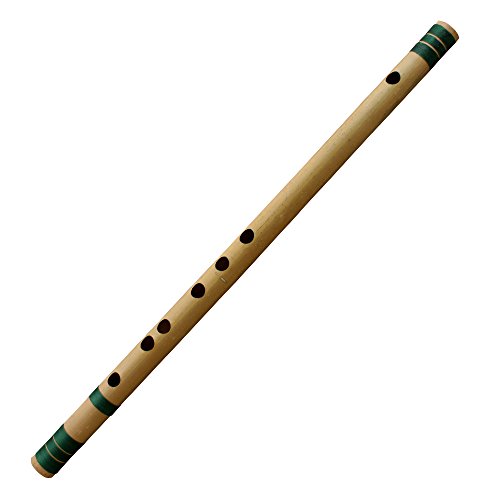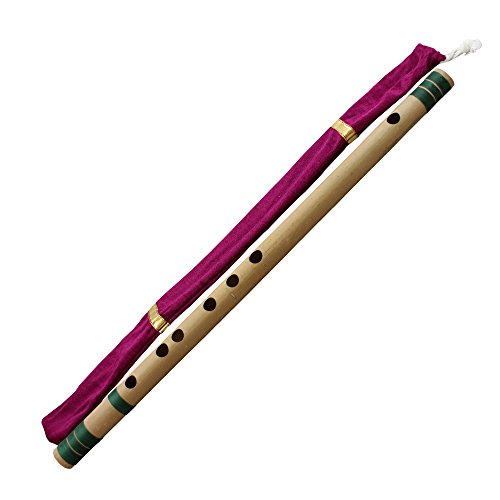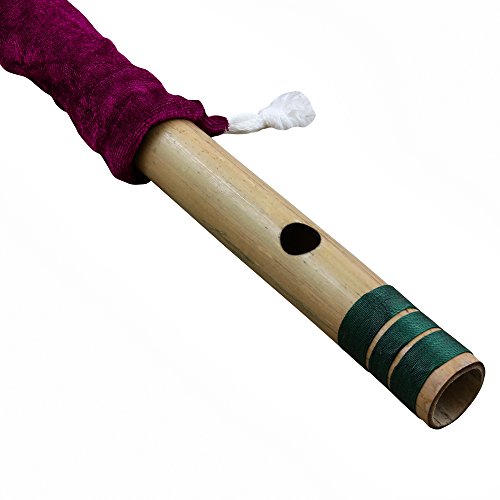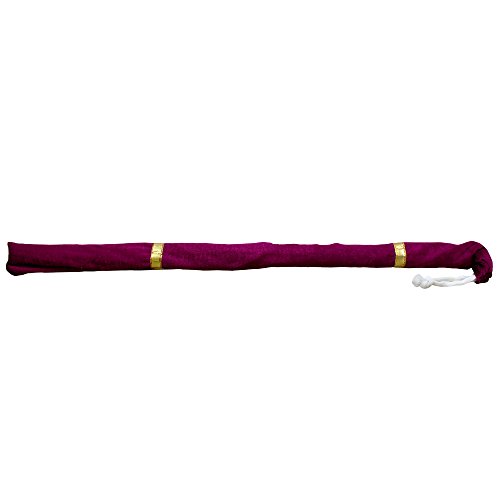HomeHomeMusical InstrumentsFluteBeginners to Proffesionals C Tune Indian Bamboo Flute Bansuri Wood Wind Musical Instrument
Shipping Price - Flat 4.5£ Charges or Get Free Shipping on order above 50£ with minimum 3 Qty.
This flute is made from a single hollow shaft of bamboo with six finger holes. An ancient musical instrument associated with cowherds and the pastoral tradition it is intimately linked to the love story of Indian God Krishna and Radha and is depicted in Buddhist paintings from around 100 AD. There are two varieties of flute: transverse and fipple. The fipple flute is usually played in folk music and is held at the lips like a whistle. Transverse flute enables superior control variations and embellishments that's why the transverse variety is preferred in Indian classical music. The sound of a flute is generated from resonance of the air column inside it. The length of this column is varied by closing or leaving open a varying number of holes. Half-holing is employed to play flat or minor notes. The size of a flute affects its pitch. Longer flute with a larger bore have a lower pitch and the slimmer and shorter ones sound higher. In order to play the diatonic scale on a flute one needs to find where the notes lie. For example in a flute where "SA" or the tonic is always played by closing the first three holes is equivalent to "D" one can play sheet music by creating a finger notation that corresponds to different notes. RoyaltyRoute is source through which artisans can connect directly with people globally we desire to be a source where crafts sell as story not as a object.
Brands:
RoyaltyRoute
Country of Origin:
India
No reviews found
Similar products
My account
Main Categories
Contact Us
Have questions about order & Have some new requirements?
© 2015 - 2025 Silkrute. All Rights Reserved. | Privacy Policy | Terms & Conditions

















